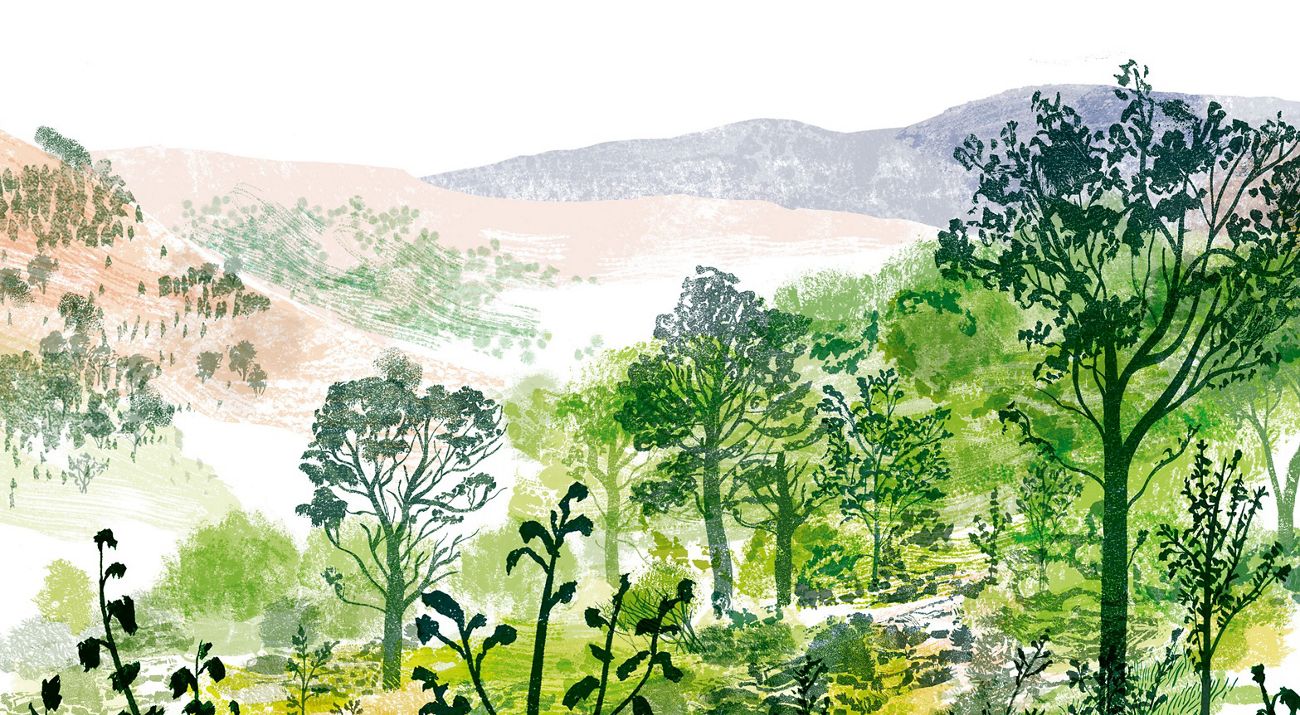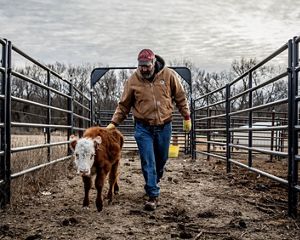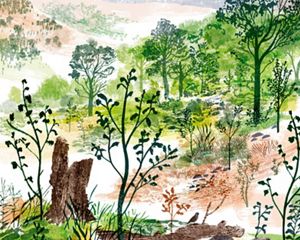Forest Carbon 101
A conversation about how trees soak up carbon with Ronnie Drever, senior conservation scientist for Nature United.
Spring 2022
How does a tree absorb carbon?
Drever: Through the magic of photosynthesis, trees take carbon dioxide out of the air, mix it with water, and make sugars and oxygen. The sugars that are created by this process get distributed throughout the plant. The carbon in those sugars is stored throughout the tree, from root to bud.
Is carbon also stored in forest soils?
Yes, and protecting carbon stores in soil is important. When we calculate how much carbon a forest can store, we consider the whole system: the standing trees, the shrub layer, the soils and the dead materials on the forest floor. Picture a temperate forest of maples and ash, where leaves fall to the ground each autumn. Some of that carbon is released when the leaves decay. But much of it stays locked up in a carbon layer that builds up in the soil over time. When trees die and fall, much of that woody material also stays in the soil.

What happens when trees are cut down?
If we use that wood in furniture or building materials, isn’t the carbon still stored in those products? Yes, but the carbon in a chair or floorboard is only part of the story. A lot of emissions come from the logging machinery, the transportation of the logs [and wood scraps left behind]. When creating wood products, we have to be careful to account for all of the emissions released during logging and production.
How do old-growth forests compare with young forests in their ability to store carbon?
Two things happen when we talk about carbon storage in forests: The first is the actual carbon stored in trees’ tissues and in forest soil. Then there’s carbon sequestration—the process that happens when trees take additional carbon out of the atmosphere via photosynthesis. You can think of it like a bank account. Carbon storage is like the capital in your account. The sequestration is the interest, accruing year by year.
In that analogy, the difference between a young secondary forest and an old-growth forest is like the difference between a start-up and an established blue-chip stock. Young forests typically have low capital (not as much stored carbon) but high interest (they take in a lot of carbon each year because they’re growing quickly). An old-growth forest has lower interest—it isn’t taking as much carbon from the atmosphere—but it has a lot of capital.
Indigenous Leadership
Protecting old-growth forests from logging and burning is critical for reducing emissions, and around the world Indigenous leadership is essential to this work. Read about one such effort in Clayoquot Sound here.
So is it more important to protect older forests or plant new ones?
All forests are important from the point of view of storing carbon. Old forests are unrivaled in their ability to store carbon. They have a lot of what scientists call irrecoverable carbon: If we disturb that stored carbon, we won’t be able to get it back through natural processes on the timetable we’d need for effective climate action. So protecting old-growth forests from logging and burning is critical. But in the longer term, it’s also important to plant trees and protect young forests so that they can become middle-aged forests. Acre for acre, a middle-aged forest actually has the greatest carbon sequestration capacity.
What about forests in different parts of the world?
Tropical forests grow really fast, so they absorb a lot of carbon through photosynthesis. But we can’t forget about the decomposition part of the equation. Things also decompose more quickly in the tropics, which releases carbon into the atmosphere. In northern boreal forests, where decomposition is low—especially in forest soils—carbon storage is high [relative to sequestration].
How valuable are forests in the big picture of climate mitigation?
It’s hard to overemphasize the importance of forests. Photosynthesis is the oldest carbon-capture technology ever invented. Our greatest advances in carbon-capture technology don’t hold a candle to trees in terms of efficiency or cost. And, of course, forests also provide many other benefits for people and for nature.
It’s important to put nature-based climate mitigation in context. We can’t take our eyes off the ball in terms of reducing fossil fuel emissions and decarbonizing the economy. But natural climate solutions are an important complement to those efforts. Our forests have a fundamental role to play in making sure our children, and their children, have a stable climate.
What role could natural reforestation play?
A 2020 study published in Nature suggests letting forests regrow naturally can help boost efforts to fight climate change. Read about that work in the magazine's 2021 feature story "Second Nature."



